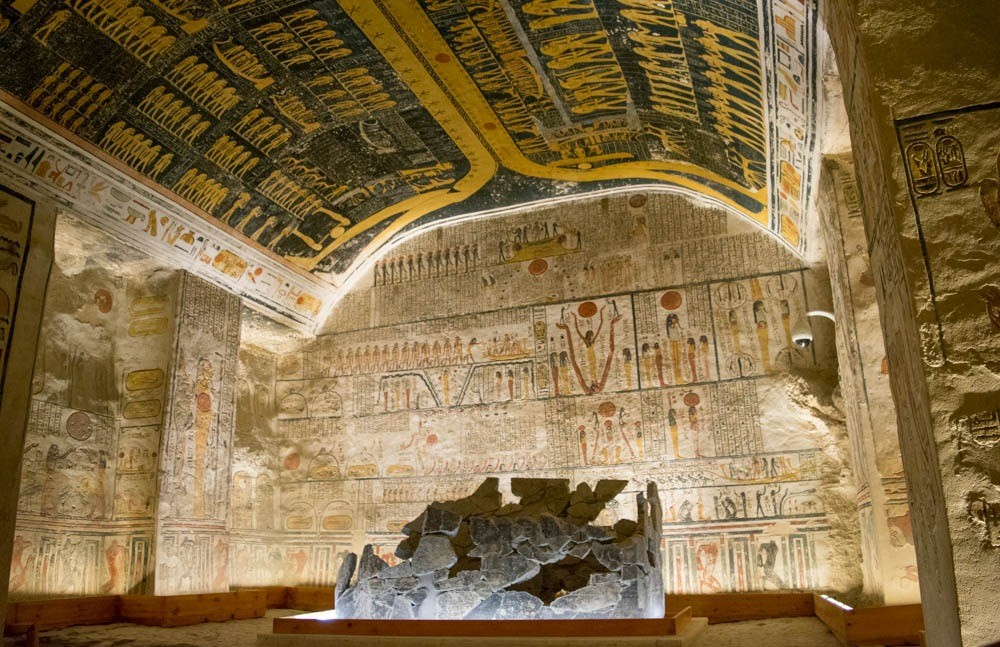
The Valley of the Kings: Exploring the Royal Tombs of Ancient Egypt
The Valley of the Kings is one of Egypt’s most iconic archaeological sites and a must-visit destination for anyone traveling to Luxor. Nestled on the west bank of the Nile, this ancient necropolis served as the burial ground for pharaohs and powerful nobles during the New Kingdom period. With over 60 tombs discovered so far, it offers a fascinating glimpse into the wealth, beliefs, and artistry of ancient Egypt.
Why Visit the Valley of the Kings?
The Valley of the Kings is more than a cemetery; it is a window into the spiritual world of the pharaohs. Each tomb is decorated with intricate hieroglyphs, vivid paintings, and scenes depicting the journey of the king to the afterlife. Visiting this site allows travelers to experience firsthand the grandeur of ancient Egyptian civilization and the elaborate rituals associated with death and resurrection.
History of the Valley of the Kings
The Valley of the Kings was used from the 16th century BC to the 11th century BC during the New Kingdom, which includes the 18th, 19th, and 20th dynasties. Pharaohs such as Tutankhamun, Ramses II, Seti I, and Horemheb were buried here, each in elaborately decorated tombs designed to ensure a safe passage to the afterlife.
The valley was chosen for its remote and naturally protected location, surrounded by cliffs that helped conceal and safeguard the tombs from tomb robbers. Despite efforts to protect them, many tombs were looted over time, but modern excavations have revealed incredible treasures, including the discovery of Tutankhamun’s tomb in 1922 by Howard Carter.
Top Tombs to Visit
Some of the most famous tombs include:
- KV62 (Tutankhamun): The most famous tomb, discovered almost intact, showcasing priceless artifacts now displayed in the Egyptian Museum.
- KV17 (Seti I): Known for its beautifully preserved wall paintings and intricate designs.
- KV7 (Ramses II): One of the longest tombs, decorated with elaborate carvings and hieroglyphs.
- KV9 (Ramses V & VI): Features impressive ceilings with starry sky decorations.
Visitors can explore several tombs, while special arrangements may be needed to enter the most famous tombs like Tutankhamun’s.
Tips for Visiting the Valley of the Kings
Arrive early to avoid the heat and crowds, especially during summer.
Wear comfortable shoes, as paths are uneven and involve walking and climbing stairs.
Bring water, a hat, and sunscreen for protection against the sun.
Photography is restricted in some tombs, so check the rules before entering.
Hiring a licensed guide enriches your experience, explaining the symbolism and history behind the decorations and hieroglyphs.
Best Time to Visit
Early morning is ideal for exploring the Valley of the Kings, when temperatures are cooler and the site is less crowded. Winter months are generally more comfortable than the hot summer season.
How to Get There
The Valley of the Kings is located on the west bank of Luxor. Travelers can reach the site by taxi, private car, or as part of guided tours that often include nearby attractions such as the Temple of Hatshepsut and the Colossi of Memnon.
Final Thoughts
The Valley of the Kings is an essential destination for anyone interested in Egypt’s rich history. Walking through the corridors of pharaohs’ tombs, admiring the colorful hieroglyphs, and imagining the ancient rituals offers an unforgettable experience. A visit here is not only a journey into the past but also a chance to connect with the incredible legacy of ancient Egyptian civilization.





